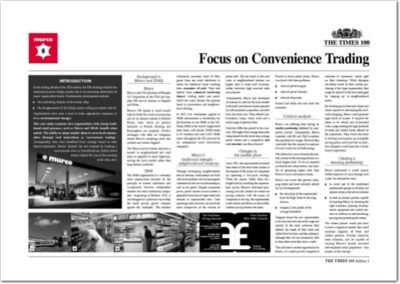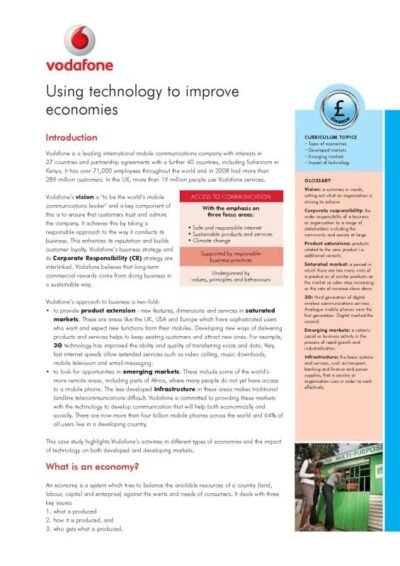A composite index serves as a vital tool in the realm of finance and economics, providing a consolidated measure of performance across various assets or sectors. It aggregates multiple indicators into a single figure, allowing investors, analysts, and policymakers to gauge the overall health of a market or economy. The concept of a composite index is not new; it has been employed for decades to track the performance of stock markets, economic indicators, and even social metrics.
By distilling complex data into a singular, comprehensible format, composite indices facilitate informed decision-making and strategic planning. The significance of composite indices extends beyond mere numbers; they encapsulate trends and shifts within the market landscape. For instance, the well-known S&P 500 index comprises 500 of the largest publicly traded companies in the United States, providing a snapshot of the overall market performance.
Similarly, other indices may focus on specific sectors, such as technology or healthcare, offering insights into particular areas of interest. As such, understanding composite indices is crucial for anyone engaged in financial markets or economic analysis.
Summary
- A composite index is a statistical tool used to measure the performance of a group of securities or assets.
- The components of a composite index can include stocks, bonds, commodities, or other financial instruments.
- The benefits of using a composite index include providing a comprehensive view of market performance and reducing the impact of individual stock price movements.
- Composite index is calculated using a weighted average of the components, where the weights are based on factors such as market capitalization or price.
- Types of composite index include price-weighted, market-value weighted, and equal-weighted indices, each with its own methodology for calculating the index.
Understanding the Components of Composite Index
Component Selection: A Critical Factor
The selection of components is critical; they must be relevant and representative of the broader context that the index aims to measure. For example, in the case of a stock market composite index, the components might include the share prices of selected companies weighted by their market capitalisation. This means that larger companies have a more significant impact on the index’s movement than smaller ones.
Varying Components for Different Indices
In contrast, an economic composite index might combine indicators such as consumer confidence, manufacturing output, and retail sales to provide a holistic view of economic health.
The Power of Interplay
The interplay between these components is what gives rise to the composite index’s ability to reflect complex realities in a simplified manner.
Benefits of Composite Index
The advantages of using a composite index are manifold. Firstly, it simplifies the analysis of vast amounts of data by condensing it into a single figure that can be easily interpreted. This is particularly beneficial for investors who may not have the time or resources to analyse each component individually.
A composite index allows them to quickly assess market trends and make informed investment decisions based on a broader understanding of market dynamics. Moreover, composite indices serve as benchmarks for performance evaluation. Investors often use them to compare the performance of individual stocks or portfolios against the overall market.
For instance, if an investor’s portfolio outperforms the FTSE 100 index over a given period, it indicates that their investment strategy is effective relative to the broader market. This benchmarking capability is invaluable for fund managers and institutional investors who need to demonstrate their performance to stakeholders.
How Composite Index is Calculated
The calculation of a composite index involves several steps and methodologies that vary depending on the type of index being constructed. Generally, the process begins with selecting the components that will make up the index. Once these components are identified, they are assigned weights based on their significance or market capitalisation.
This weighting ensures that larger entities have a more substantial influence on the index’s overall movement. The most common method for calculating a composite index is through a weighted average. For instance, in a price-weighted index like the Dow Jones Industrial Average, stocks with higher prices have more influence on the index’s value than those with lower prices.
Conversely, in a market capitalisation-weighted index like the S&P 500, companies with larger market caps exert more influence. The formula typically involves summing the weighted values of all components and then dividing by a divisor that adjusts for stock splits and other factors to maintain consistency over time.
Types of Composite Index
Composite indices can be categorised into several types based on their focus and methodology. One prominent type is the stock market composite index, which tracks the performance of selected stocks within a particular exchange or sector. Examples include the NASDAQ Composite Index, which focuses on technology stocks, and the Nikkei 225 in Japan, which includes 225 large companies listed on the Tokyo Stock Exchange.
Another category is economic composite indices that aggregate various economic indicators to provide insights into overall economic performance. The Leading Economic Index (LEI) is an example that combines ten different economic indicators to predict future economic activity. Additionally, there are social composite indices that measure societal well-being through various metrics such as education levels, health outcomes, and income distribution.
The Human Development Index (HDI) is an example that combines life expectancy, education level, and per capita income to assess human development across countries.
Importance of Composite Index in Financial Markets
In financial markets, composite indices play an essential role in shaping investment strategies and guiding economic policy decisions. They serve as barometers for market sentiment and can influence investor behaviour significantly. For instance, when a major composite index experiences a sharp decline, it often triggers panic selling among investors who fear further losses.
Conversely, a rising index can instil confidence and encourage investment. Moreover, policymakers rely on composite indices to gauge economic health and formulate appropriate responses. For example, if an economic composite index indicates a downturn in consumer spending and manufacturing output, policymakers may implement stimulus measures to boost economic activity.
Thus, composite indices not only reflect current conditions but also inform future actions by both investors and government entities.
Limitations of Composite Index
Despite their numerous advantages, composite indices are not without limitations. One significant drawback is that they can oversimplify complex realities by reducing multifaceted data into a single figure. This simplification may lead to misinterpretations or an incomplete understanding of underlying issues.
For instance, a rising stock market index may not necessarily indicate widespread economic prosperity if it is driven by a few large companies while smaller firms struggle. Additionally, the methodology used in constructing composite indices can introduce biases. The choice of components and their respective weights can significantly affect the index’s behaviour and interpretation.
If an index is heavily weighted towards certain sectors or companies, it may not accurately represent broader market trends. Furthermore, external factors such as geopolitical events or changes in regulatory environments can impact indices in ways that are not immediately apparent from their numerical values.
Examples of Composite Index in Practice
Numerous examples illustrate how composite indices function in practice across various domains. In finance, one of the most widely recognised examples is the MSCI World Index, which tracks large and mid-cap stocks across 23 developed markets. This index provides investors with insights into global equity performance and serves as a benchmark for international investment portfolios.
In economics, the Conference Board’s Leading Economic Index (LEI) aggregates ten key indicators such as average weekly hours worked and new orders for consumer goods to forecast future economic activity in the United States. This predictive capability makes it an invaluable tool for economists and policymakers seeking to anticipate changes in economic conditions. Socially oriented composite indices also play a crucial role in assessing societal progress.
The World Happiness Report utilises various metrics such as income levels, social support, and life expectancy to rank countries based on their citizens’ perceived happiness and well-being. This type of index highlights how composite measures can extend beyond financial metrics to encompass broader societal issues. In conclusion, composite indices are indispensable tools that provide valuable insights across various fields by aggregating complex data into comprehensible formats.
Their ability to reflect trends and inform decision-making underscores their importance in both financial markets and broader economic contexts.
If you are interested in learning more about financial indices, you may find the article on Admiral’s Trading explaining the forex market to be informative. This article delves into the intricacies of the foreign exchange market and how traders can navigate it successfully. Understanding different types of indices, such as composite indices, can be crucial for making informed investment decisions. Check out the article here for more insights.
FAQs
What is a composite index?
A composite index is a statistical measure that combines multiple individual indices or indicators into a single value to represent a broader measure of a particular concept or phenomenon.
What are some examples of composite indices?
Examples of composite indices include the Human Development Index (HDI), which combines indicators such as life expectancy, education, and income to measure overall human development, and the Dow Jones Industrial Average, which combines the stock prices of 30 large publicly traded companies to represent the overall performance of the stock market.
How are composite indices calculated?
Composite indices are typically calculated using a weighted average of the individual indices or indicators that are combined. The weights assigned to each component are based on their relative importance in the overall concept being measured.
What are the uses of composite indices?
Composite indices are used to provide a more comprehensive and holistic measure of complex concepts or phenomena, such as economic performance, social development, or environmental sustainability. They are often used by policymakers, researchers, and analysts to make comparisons and track changes over time.
What are the limitations of composite indices?
Some limitations of composite indices include the subjectivity of the weighting process, the potential for data manipulation or bias, and the difficulty of capturing the full complexity of the concept being measured. Additionally, composite indices may oversimplify complex issues and mask disparities within the components being combined.
 A revolution in banking (PDF)
A revolution in banking (PDF)  The advantages of sponsorship (PDF)
The advantages of sponsorship (PDF)  Focus on convenience trading (PDF)
Focus on convenience trading (PDF)  Using technology to improve economies (PDF)
Using technology to improve economies (PDF) 

